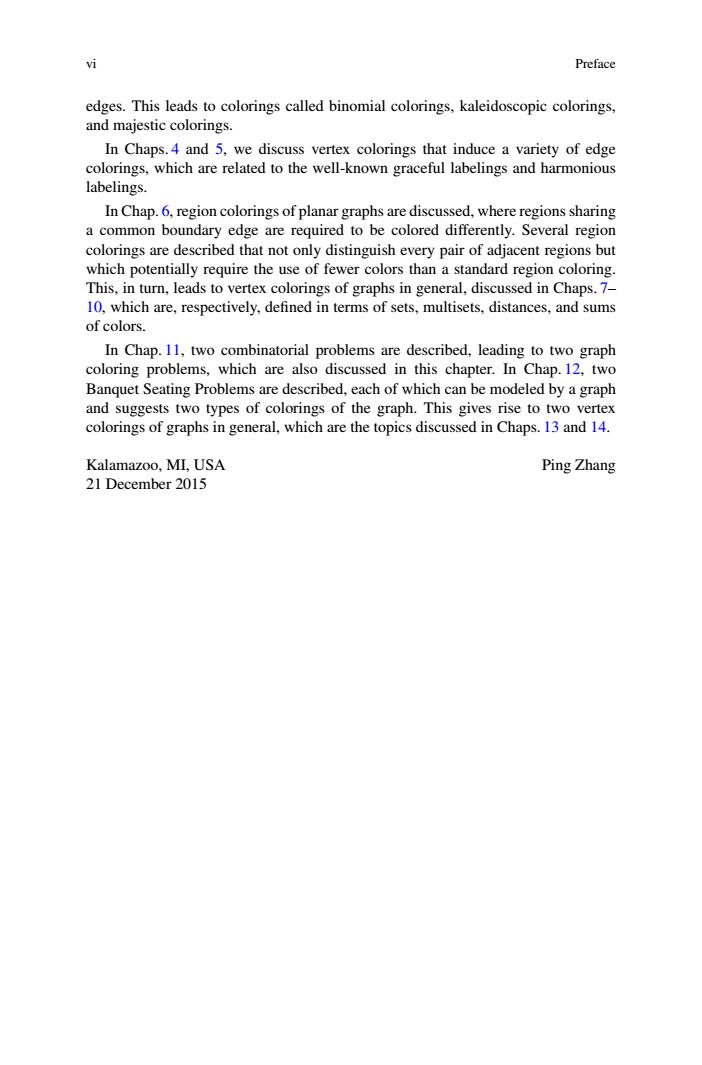正在加载图片...

Prefaceedges. This leads to colorings called binomial colorings, kaleidoscopic coloringsand majestic colorings.In Chaps.4 and 5, we discuss vertex colorings that induce a variety of edgecolorings, which are related to the well-known graceful labelings and harmoniouslabelingsIn Chap. 6, region colorings of planar graphs are discussed, where regions sharinga common boundary edge are required to be colored differently. Several regioncolorings are described that not only distinguish every pair of adiacent regions butwhich potentially require the use of fewer colors than a standard region coloringThis, in turn, leads to vertex colorings of graphs in general, discussed in Chaps.10, which are, respectively,deined in terms of sets, multisets, distances, and sumsofcolors.InChap.Lltwo combinatorial problemsaredescribedJeadingotwo grapl, which are also discussed in this chapter. In Chap.12, twocoloringproblemBanquet Seating Problems are described, each of which can be modeled by agraphand suggests two types of colorings of the graph. This gives rise to two vertexoringsgaphsingawhhathpsdicussediChaps3andKalamazoo,ML USAPing Zhang21 December 2015vi Preface edges. This leads to colorings called binomial colorings, kaleidoscopic colorings, and majestic colorings. In Chaps. 4 and 5, we discuss vertex colorings that induce a variety of edge colorings, which are related to the well-known graceful labelings and harmonious labelings. In Chap. 6, region colorings of planar graphs are discussed, where regions sharing a common boundary edge are required to be colored differently. Several region colorings are described that not only distinguish every pair of adjacent regions but which potentially require the use of fewer colors than a standard region coloring. This, in turn, leads to vertex colorings of graphs in general, discussed in Chaps. 7– 10, which are, respectively, defined in terms of sets, multisets, distances, and sums of colors. In Chap. 11, two combinatorial problems are described, leading to two graph coloring problems, which are also discussed in this chapter. In Chap. 12, two Banquet Seating Problems are described, each of which can be modeled by a graph and suggests two types of colorings of the graph. This gives rise to two vertex colorings of graphs in general, which are the topics discussed in Chaps. 13 and 14. Kalamazoo, MI, USA Ping Zhang 21 December 2015